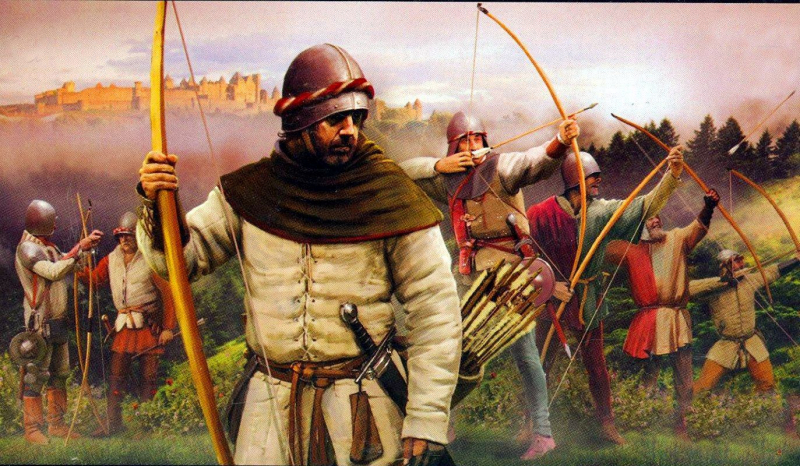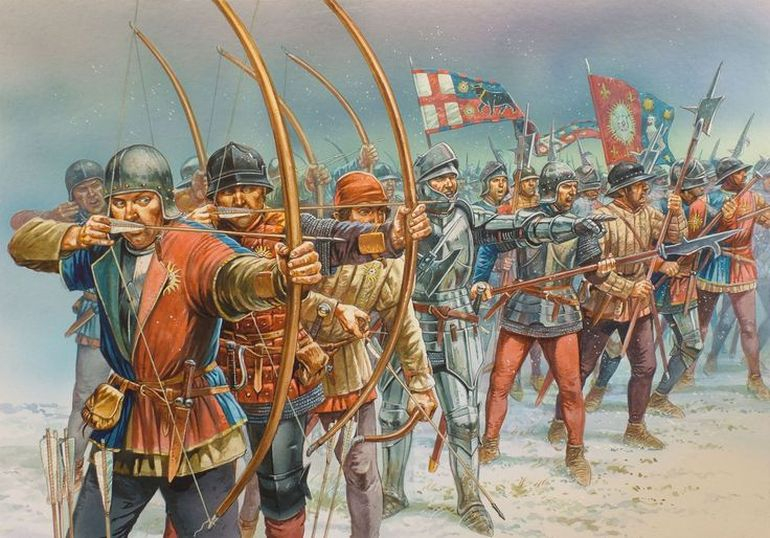English Longbowmen
The 28-year-old King Henry V of England set up camp in the fields and orchards of Maisoncelles near Agincourt after a 17-day march from Harfleur that nearly circled the sources of the river Somme. The most well-known instance of longbowmen in action is during the Battle of Agincourt. The threat presented by English longbowmen in a pitched battle (a conflict on a designated battleground) was well acknowledged.
The draw weight of a medieval longbow is a subject of much debate. Although other sources cite substantially larger draw weights in the region of 150-160 pounds-force, it has been calculated to be between 90 and 110 pounds-force. Certainties include the fact that the English longbow was a potent weapon and the archer was a professional soldier who had specialized training to achieve the strength and proficiency required to utilize his weapon.
The Englishman's right hand was used to pull his bow while his left hand was not kept stable. Instead, he put his entire body weight into the bow's horns while keeping his right at rest on the nerve. It is likely from this that the expressions "bending the bow" and "drawing a bow" came into being.












